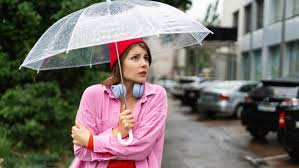The arrival of the monsoon brings relief from scorching heat, but for many women, it also ushers in a season of heightened health risks. Doctors warn that damp conditions and poor menstrual hygiene during this time can fuel infections that are often ignored until they become serious.
The Hidden Dangers of Dampness
Humidity and constant wetness create an ideal environment for bacteria and fungi to thrive. Sanitary pads, tampons, or cups left unchanged for too long can become breeding grounds for infection, leading to urinary tract infections, reproductive tract infections, and painful skin rashes.
For women commuting or relying on public restrooms, the risks multiply. Limited access to clean facilities often means delayed changes, further compounding the problem.
Beyond Short-Term Discomfort
While most infections start as irritation or burning, gynecologists caution that repeated neglect may lead to chronic pelvic pain, infertility, and higher chances of cervical complications. The toll is not just physical—women report fatigue, reduced productivity, and mental stress when infections linger through the season.
How to Stay Safe During the Monsoon
Health experts recommend basic but consistent practices:
- Change pads every 4–6 hours, tampons every 4–8, and wash menstrual cups thoroughly.
- Stick to cotton undergarments and avoid synthetic fabrics that trap moisture.
- Clean the intimate area with warm water and dry thoroughly before wearing fresh clothing.
- Carry personal hygiene kits—extra pads, tissues, and sanitizer—when traveling.
- Consult a doctor promptly if symptoms such as itching, excessive pain, or unusual discharge appear.
A Broader Struggle for Menstrual Health
The risks magnified by the rains are part of a larger challenge: access. In many parts of India, women still lack reliable sanitary products, private washrooms, or safe disposal options. Public health advocates argue that without structural improvements in menstrual hygiene management, seasonal advice can only go so far.
The Bottom Line
The monsoon season is a reminder that menstrual health is not just a private matter but a public health issue. With awareness, preparation, and better access to resources, women can weather the rains without compromising their well-being.


